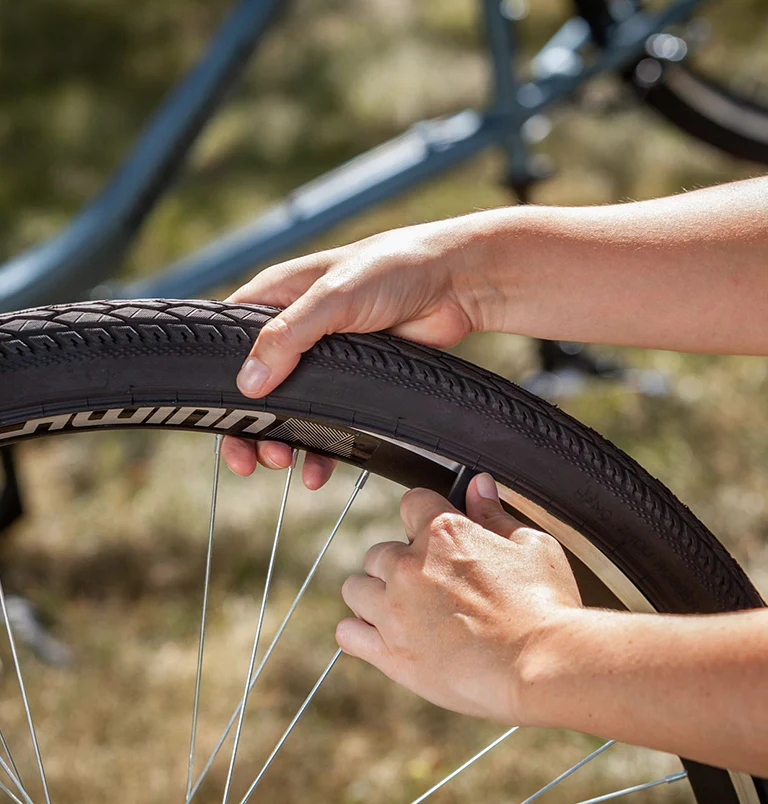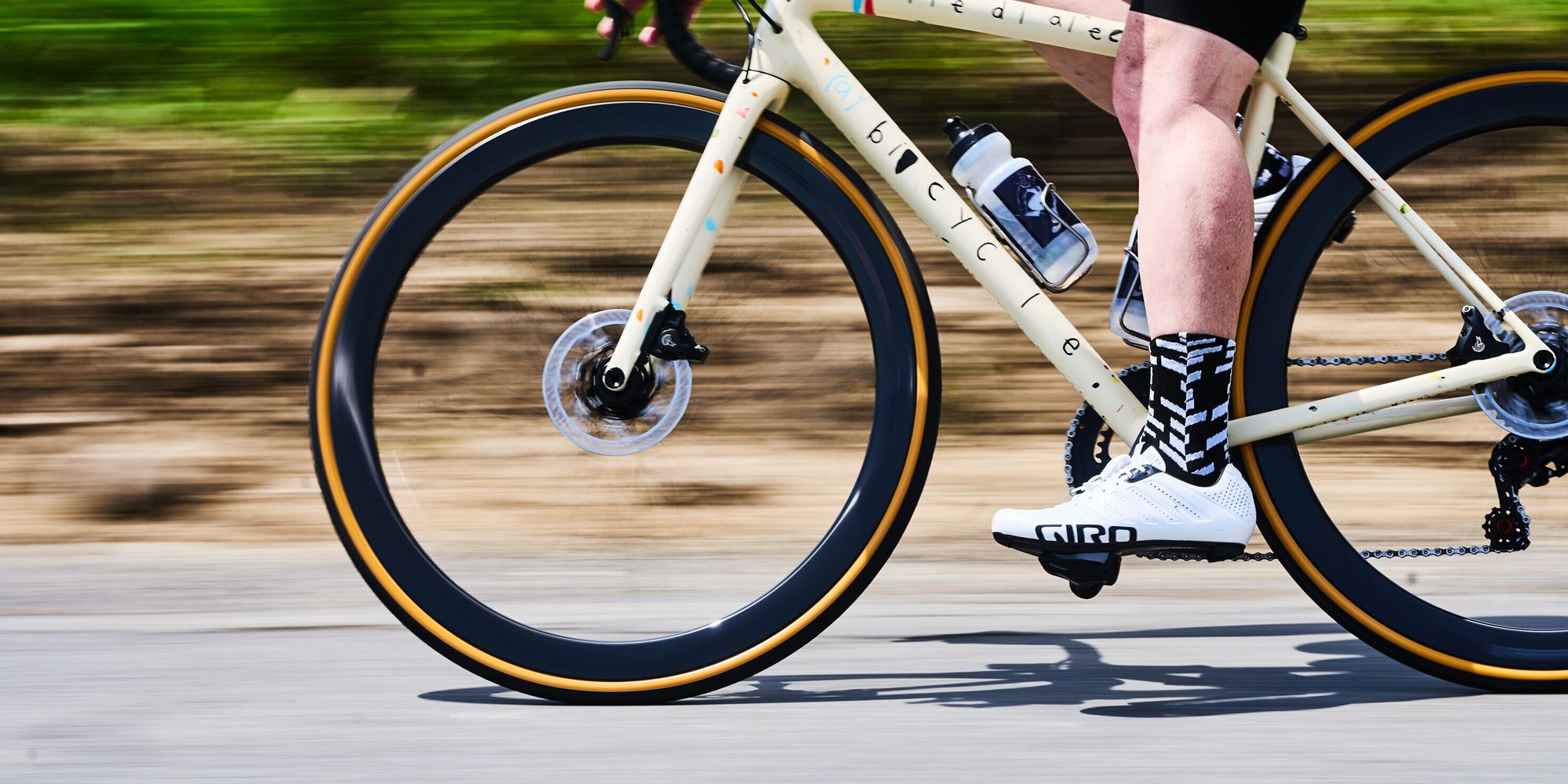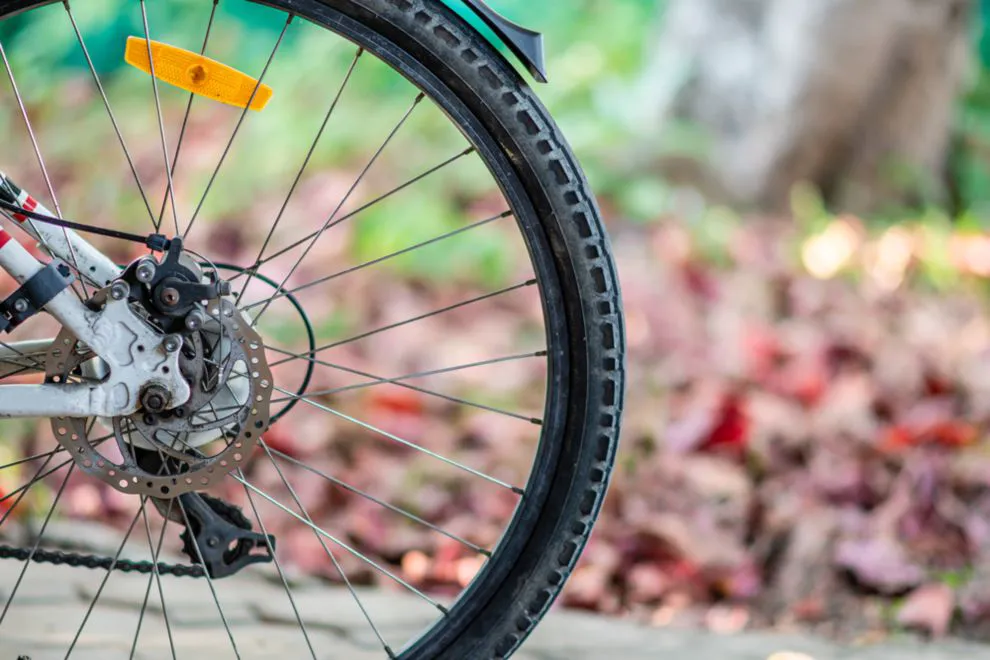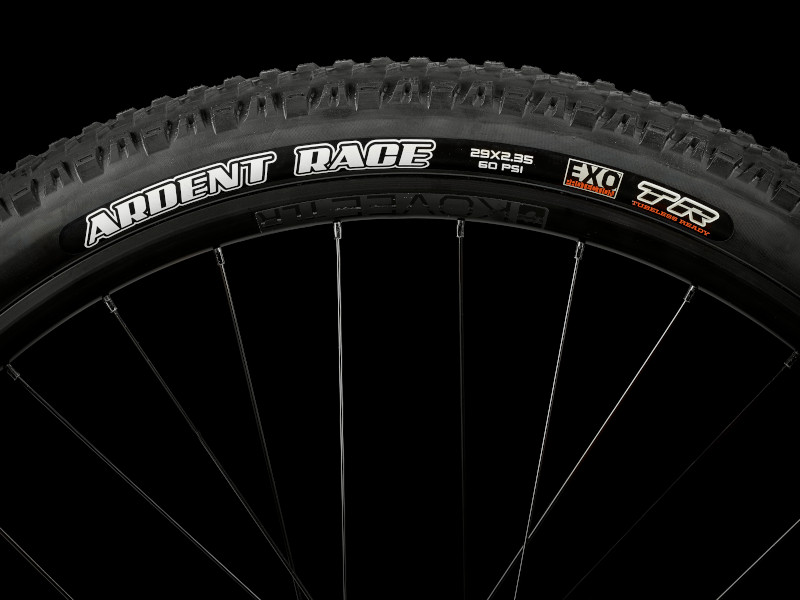I. Introduction

A. Importance of Bicycle Tires in Ride Performance and Safety
Bicycle tires play a crucial role in the overall ride performance and safety of a bicycle. They are the only contact point between the rider and the road, and their quality and characteristics directly impact the bike‘s handling, comfort, and efficiency. Choosing the right bicycle tires is essential for a smooth and enjoyable ride, as well as ensuring optimal safety on various terrains and conditions.
B. Factors to Consider When Selecting Bicycle Tires
When selecting bicycle tires, there are several important factors that should be taken into consideration. These include the type of bike and riding style, the terrain and conditions you’ll be riding on, and the desired performance characteristics such as grip, rolling resistance, and puncture protection. Additionally, factors like tire size and width, tread pattern, sidewall construction, and bead and casing materials can all have an impact on the performance and suitability of the tires for your specific needs.
II. Understanding Bicycle Tire Basics
A. Types of Bicycle Tires
There are different types of bicycle tires designed for specific disciplines and riding styles. Understanding the characteristics and differences between these types can help you choose the right tires for your bike.
- Road Bike Tires: Road bike tires are designed for riding on paved roads and offer low rolling resistance, good grip on smooth surfaces, and high efficiency. They are often narrower and have a slick or semi-slick tread pattern.
- Mountain Bike Tires: Mountain bike tires are designed for off-road trails and provide excellent traction, durability, and puncture resistance. They have a wider profile, aggressive tread patterns, and are available in various widths to suit different terrains and riding styles.
- Hybrid Bike Tires: Hybrid bike tires are designed for versatility and are suitable for a combination of on-road and light off-road riding. They provide a balance between efficiency and traction, offering smooth rolling on paved surfaces and moderate grip on gravel or dirt paths.
B. Anatomy of a Bicycle Tire
To understand the different characteristics and performance aspects of bicycle tires, it’s important to be familiar with their various components.
- Tread Pattern and Design: The tread pattern refers to the arrangement of knobs or smooth surfaces on the tire’s surface. Different tread patterns are optimized for specific terrains and conditions, providing grip, stability, and low rolling resistance where needed.
- Sidewall Construction: The sidewall of a tire is the area between the bead and the tread. It provides structural support and protection against impact and cuts. Sidewall construction can vary in thickness, flexibility, and puncture resistance, influencing the overall durability and performance of the tire.
- Bead and Casing Materials: The bead of a tire is the part that fits onto the rim and holds the tire in place. It is usually made of steel or Kevlar for durability and strength. The casing refers to the layers of fabric or rubber underneath the tread and provides additional structure and protection. The casing material can vary and impact factors such as rolling resistance, durability, and overall ride quality.
III. Choosing the Right Size and Width
A. Determining the Correct Tire Size

- Understanding Tire Sizing: Tire sizes are often indicated by a combination of numbers and letters, which denote the tire’s width, diameter, and other specifications. The ISO and ETRTO systems provide standardized measurements that help ensure compatibility and accuracy.
- Factors Influencing Tire Size Selection: Bike frame clearance is a crucial consideration when choosing tire size. The tire should have enough clearance both horizontally and vertically to prevent rubbing against the frame or fork. Additionally, the type of riding conditions, such as smooth roads or rough off-road trails, can influence the appropriate tire size for optimal performance and comfort.
B. Evaluating Tire Width Options
Tire width is another important consideration when selecting bicycle tires, as it affects factors like grip, comfort, rolling resistance, and overall handling characteristics. Different tire widths offer various benefits and considerations for road, mountain, and hybrid bikes.
- Benefits of Different Tire Widths: Narrower tires typically offer lower rolling resistance and better aerodynamics, making them popular for road biking and racing. They also tend to be lighter and more responsive. Wider tires, on the other hand, provide increased traction, improved stability, and better shock absorption, making them suitable for off-road and more adventurous riding.
-
Considerations for Road, Mountain, and Hybrid Bikes: Road bikes generally have narrower tires (ranging from 23mm to 32mm) for speed and efficiency on smooth surfaces. Mountain bikes have wider tires (ranging from 2.0″ to 2.4″ or more) for better traction and control on uneven and loose terrains. Hybrid bikes typically fall in between, with tire widths ranging from 28mm to 42mm for versatility and comfort on a variety of surfaces.
IV. Tire Tread and Performance

A. Tread Patterns for Different Riding Conditions
When it comes to choosing the right tire for your bike, understanding the different tread patterns available is essential. The type of tread pattern you choose will depend on the riding conditions you typically encounter.
- Slick Tires for Smooth Surfaces Slick tires are characterized by their smooth, treadless surface, making them ideal for riding on smooth roads or surfaces. These tires offer minimal rolling resistance, allowing for maximum speed and efficiency. They are commonly used on road bikes, where speed and grip on pavement are the primary concerns. However, slick tires may not provide sufficient traction on wet or loose surfaces, so they are not recommended for off-road use.
- Treaded Tires for Off-Road and Variable Terrain Unlike slick tires, treaded tires have patterns and grooves on their surface. They are designed for off-road and variable terrain, providing better traction and control. The type and depth of the tread pattern will vary depending on the intended use. For example, aggressive tread patterns with large knobs are suitable for muddy or loose terrains, while smaller knobs or a more evenly spaced tread pattern are ideal for hard-packed trails or gravel roads. Treaded tires offer increased grip and traction, allowing riders to navigate through challenging terrains with confidence.
B. Tire Tread Compounds and Durability

Tire tread compounds play a crucial role in durability, grip, and overall performance. Understanding the differences between soft and hard rubber compounds will help you choose a tire that suits your needs.
- Soft vs. Hard Rubber Compounds Soft rubber compounds provide excellent grip and traction on various surfaces. They conform to the terrain, allowing the tire to maintain contact and provide maximum grip. However, soft rubber compounds wear out faster than hard rubber compounds, making them less durable in the long run.
- Balancing Grip and Longevity Finding the right balance between grip and longevity is crucial when choosing tire tread compounds. If you prioritize grip and performance, a softer rubber compound may be the best choice, even if it means sacrificing some durability. However, if you primarily ride on smooth surfaces or prioritize longevity, a harder rubber compound will be a better option.
By understanding tire tread patterns and compounds, as well as the importance of proper tire pressure, cyclists can make informed decisions when choosing and maintaining their bike tires. Finding the right balance between grip, durability, and comfort will result in improved performance and increased enjoyment during rides. Remember to follow manufacturer recommendations and make necessary adjustments based on your individual riding conditions and preferences.

